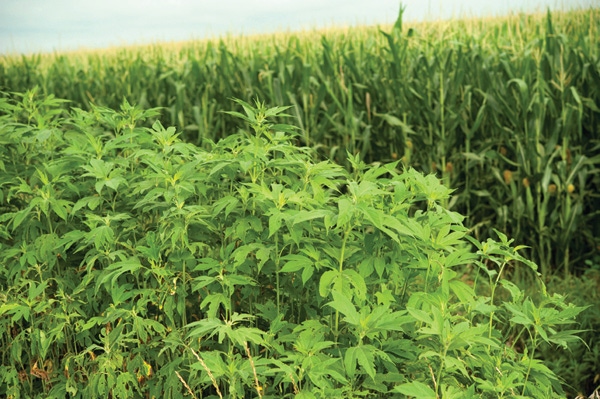March 29, 2013

As a graduate student, Adam Davis spent his Septembers crawling around on his hands and knees through crop fields trying to find and recover giant foxtail seeds for his research studies. He soon discovered that seed predators had already eaten the seeds on the soil surface. Mice, crickets, ground beetles and other organisms were doing a highly effective job at reducing the number of weed seeds.
“I began to measure weed seed predation and saw that within two days, nearly all of the seeds I’d put out in the field [to measure the amount of weed seed predation] would be gone,” says Davis, an ecologist with USDA’s Agricultural Research Service at the University of Illinois. “Over the course of a growing season, I’ve seen weed seed predators eat between 40% and 90% of the seeds produced that year. It’s an important weed management benefit that we take for granted, but which really makes a difference.”
Weed management toolbox
Davis conducted that early research to evaluate a valuable option for growers who want to manage hard-to-control weed populations: Manage the weed seedbank to prevent weeds from getting started.
The key to weed seedbank management is to reduce the ability of the seeds to germinate. Then growers either don’t have the weeds to control or they have fewer weeds to handle with other weed management tools. Here are Davis’s suggestions for managing a seedbank:
Reduce seed production by either competitive crop varieties or through agronomic practices.
Kill newly formed seeds by harvesting and removing weed seeds from the field with modified harvest machinery. Modified combine harvesters have been developed for removing weed seeds, and a practice known as “spray topping” uses herbicide to kill developing seed.
Look at diversifying crop rotations. Crops with different growing patterns and canopy structure can also increase seed predation.
Delay primary tillage. To increase weed seed predation, delay primary tillage to give predators time to eat seeds on the soil surface. Avoid deep tillage so seeds are not protected deep in the soil profile.
Encourage germination of weed seeds and plan on controlling the emergence flushes completely with a stale-seedbed approach. A stale seedbed can be made through either physical (field cultivation) or chemical means. “Field cultivation is usually more effective, since it not only kills the emerged weeds, but brings new weeds to the surface to be killed in a second pass a week or two later,” Davis says.
Cover crops comeback?
Cover crops can be a tool for weed seedbank management. “Cover crops have had a long history in the Midwest, and can make a comeback should market forces and weed management realities combine to make them necessary,” Davis says. “Adding cover crops to the weed management toolkit can reduce opportunities for weed seedlings to establish, and can also provide a critical delay in weed seedling emergence so that crop competition can further suppress weeds.”
Davis says the most important element of a successful weed seedbank management strategy is to implement a diversified crop rotation so crops with contrasting life histories are grown in different phases of the rotation. “This prevents any one weed species from getting too comfortable, and makes it difficult for weeds to reproduce in the canopy of a crop with a different life history,” he says.
“We focus on killing weed seedlings because we can see them, and we have products available to do this,” Davis says. “Certainly, we don’t want to give up managing weed seedlings, but if we reduce weed seedbank population densities, managing weed seedlings becomes much easier.”
Like what you’re reading? Subscribe to Farm Industry News Now e-newsletter to get the latest news and more straight to your inbox twice weekly.
About the Author(s)
You May Also Like






